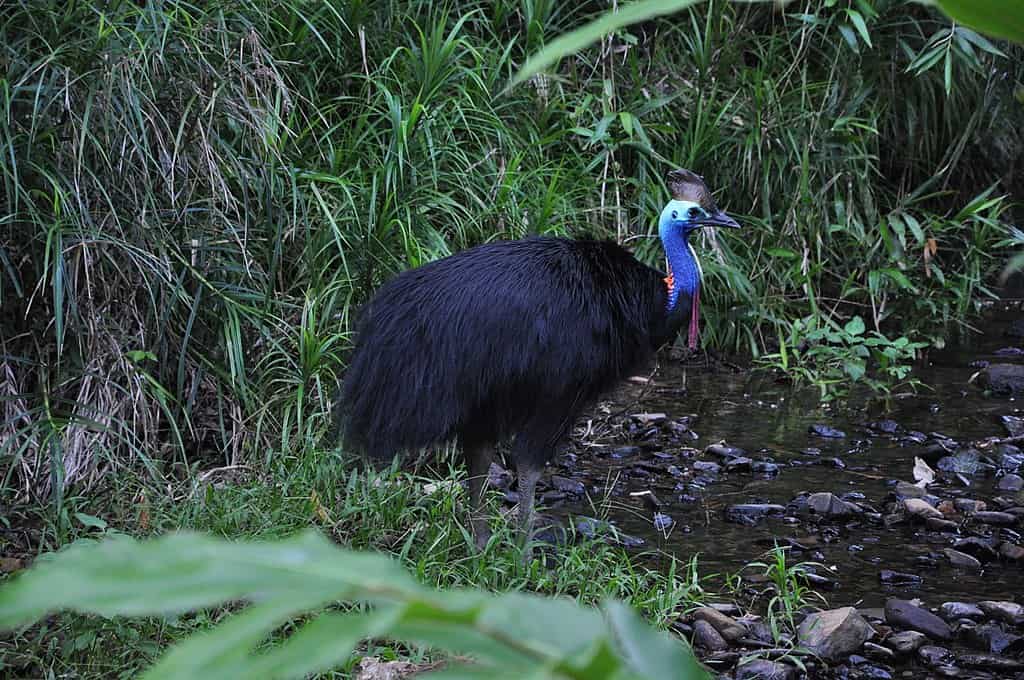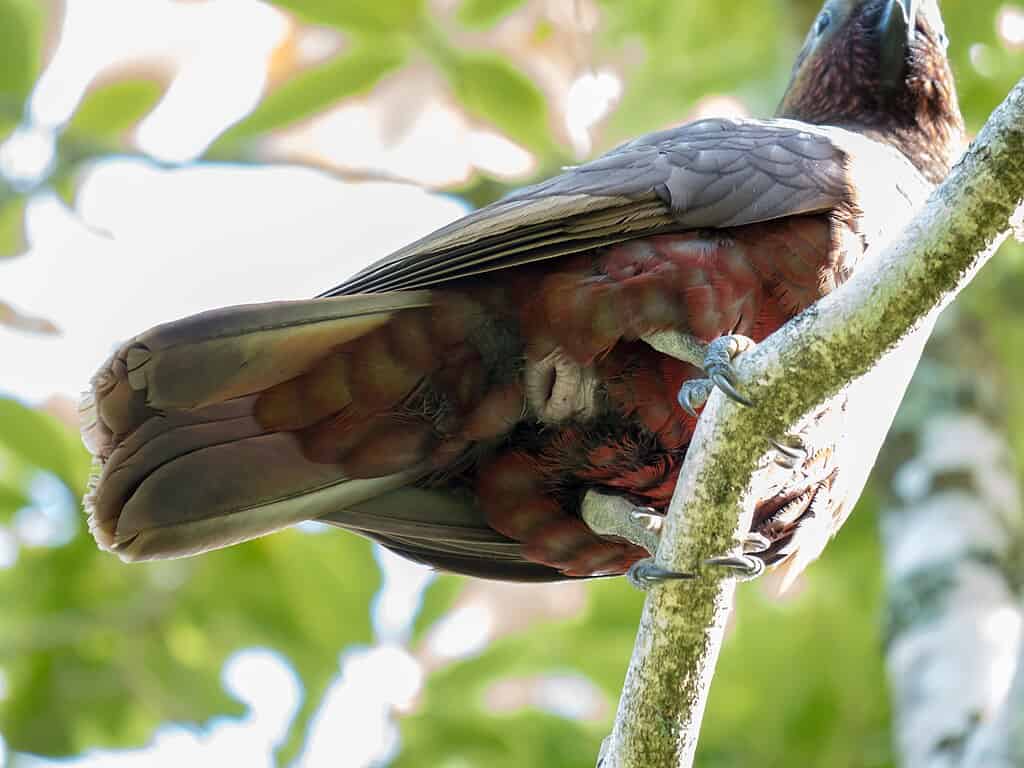
We’ve all seen the videos of male peacocks dazzling with their spectacular plumage in the rains or of birds of paradise dancing — in an almost drunken stupor — on the floors of canopied forests. This avian song and dance isn’t just a song and dance. It’s an invitation to mate.
The males don’t do this for themselves. They do it for the ladies. Males show off their moves, music, and more in a bid to win over potential mates. It’s nature’s equivalent of a thirst trap. These bizarre and fun-to-watch bird courtship rituals have been extensively documented by videographers, conservationists, and biologists alike. Yet, the actual act of avian mating itself is still a bit of a public mystery. So, let’s get down to the basics of avian lovemaking.
What’s under the feathers?
Like mammals, birds reproduce through internal fertilization. This means that the male bird’s sperm needs to travel through the female bird’s reproductive tract for fertilization to occur. It literally happens internally. This is opposite to that of fish and amphibians, where fertilization of the female egg happens outside the body. It’s external. However, unlike mammals, most male birds do not have a penis.
Contrary to popular belief, only a few species of birds actually have a penis. Only three percent of all living birds have a penis and that may be a good thing. And the three percent of species that have them have weird ones.
Let’s talk duck dicks
Ducks aren’t your typical everyday birds. Unlike eagles or penguins, the male duck does indeed have a member. The phallic fun doesn’t just end there.
Ducks don’t have typical penises. Rather, they have coiled penises resembling corkscrews — that they insert into the complementary corkscrew-shaped vagina (yes, you read that right) of female ducks.
Cassowary confusion
Cassowaries don’t just live down under. They’re also weird down under. Both males and female members (pun intended) of the species sport both a penis as well a clitoris. However, this isn’t the weird part just yet. Despite actually having a penis, males actually don’t use it when copulating. It’s a pseudo-penis! Rather, males ejaculate from an opening at the base of the pseudo-penis as opposed to the tip of it.

The basics of avian sex
This isn’t to say that the other 97 percent of birds don’t have anything down there. Rather, in most species, both males and females sport an opening known as a cloaca.
What is a cloaca?
Remember the opening at the base of cassowary pseudo-penises? That’s a cloaca. Basically, a cloaca is just a hole. More specifically, it’s the only hole.
Unlike mammals, most birds have only one orifice for well… everything. From poo and pee to semen, the way out of all this stuff is the cloaca. It isn’t just a bird thing either. Birds aren’t the only vertebrates with cloacas. Reptiles, like lizards, and amphibians, like frogs, have them as well. Even a few kinds of fish, like sharks and stingrays, have them too.

For the 97 percent of birds in the world that have cloacas, they don’t technically mate as much as kiss.
How do birds use the cloaca?
Birds mate by doing something known as the cloacal kiss. Basically, every year — when mating season comes around — the cloacas of both sexes become larger. When these openings swell up, the male’s only intention of the season is to mate with a female of his choice (even if it isn’t hers).
When the opportunity arises males will mount females and proceed to rub their cloaca to that of the females; ensuring that they release their seed directly into the female’s reproductive tract. In most species, mating doesn’t last too long. Generally, it’s a matter of a few seconds — or even less.
But, why don’t birds have penises?
After all three percent of all bird species do have them. So, what’s with the 97 percent of all other species that’s caused them to lose theirs? Essentially, evolution. It’s not that birds can’t have penises. It’s that their bodies kill their penises. Let me explain.
Programmed cell death
In an attempt to demystify how birds lost their penises, a team of researchers from the Howard Hughes Medical Institute and the University of Florida conducted a study. The primary investigator, Martin Cohn, a development biologist, along with colleagues chose to study the common (and popular) chicken.
Chickens, like eagles, albatrosses, and penguins, are species where male individuals have cloacas. The team studied the development of chicken embryos compared to embryos of ducks, species with male individuals endowed with penises, to find out exactly how and why chickens grow cloacas instead of penises.
As part of the study, the team noticed that chicken embryos did actually grow penises. However, as soon as the penis began to develop, scientists also observed the release of a particular protein that essentially worked antagonistically to the growth of the reproductive organ. The protein, Bmp4, is a penis assassin. It encourages the death of any cells that form the chicken’s member. This type of cell death is known as programmed cell death.
In an article with Live Science, the team of researchers expressed their surprise at the findings of their study.
“It’s pretty surprising, actually. Chickens and ducks start to develop their genitalia in such a similar manner that they’re almost indistinguishable,” expressed Cohn to Live Science.
To truly test whether it was indeed the Bmp4 protein that was responsible for the loss of the penis in the chicken, the researchers decided to express the protein in the duck embryo while also blocking the protein in the chicken embryo. The results? A duck embryo with no penile growth and a chicken embryo with expressed penile growth. It was indeed the Bmp4 protein that determined the growth of the reproductive organ in birds.
Conclusion
Although researchers were able to determine how exactly birds lost their penises, the why aspect of the same question still remains unanswered. Cohn also expressed his puzzlement as to why birds seemingly physiologically choose against developing the reproductive organ.
In the meanwhile, birds don’t care too much. Either with or without a penis, all 100 percent of bird species manage to achieve internal fertilization and thus sexual reproduction. At the end of the day, size — or even absence — doesn’t matter. For birds at least.






